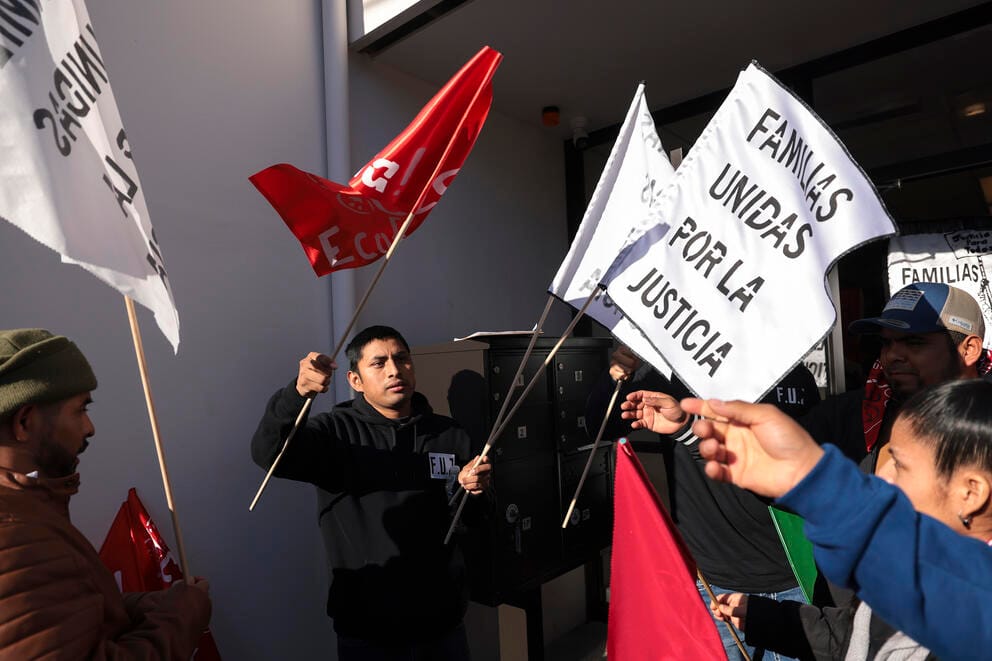Washington state’s robust tree-fruit industry could soon be at a breaking point: According to Mark Powers of the Northwest Horticultural Council, the state’s agricultural industry as a whole is contending with enormous ongoing challenges, from adverse weather conditions to reduced crop yields year over year.
According to a survey conducted by the Northwest Horticultural Council, tree-fruit growers indicated the cost of agricultural labor for growers has increased by an estimated 127% over the last decade, far exceeding the 22% increase in payments they receive when selling their fruit. In 2023, fruit growers surveyed by the organization said nearly all their earnings were spent on paying workers. “The current state of affairs is untenable, and the underlying system is clearly unsustainable,” said Powers.
A bipartisan coalition led by U.S. Rep. Dan Newhouse and California Democrat Rep. Zoe Lofgren has proposed a possible solution in the reintroduction of the Farm Workforce Modernization Act. The policy could alleviate fears of deportation among undocumented farmworkers and provide employers greater certainty in finding eligible workers to build and maintain a stable agricultural workforce.
Meanwhile, the Trump administration has ramped up deportation of undocumented immigrants in the past few months, farmworkers among them. One person who was detained was Alfredo “Lelo” Juarez Zeferino, the farmworker who co-founded Familias Unidas por la Justicia (FUJ), an independent union, based in Burlington in Skagit County, representing migrant and Indigenous farmworkers. Many activists see the detention as retaliation for Juarez’s union organizing efforts.
Currently, the percentage of agricultural workers in the U.S. who are undocumented hovers around 40% — a drop from upward of 55% in prior years, according to figures recorded by the U.S. Department of Agriculture’s Economic Research Service.
The administration has also proposed tariffs that are expected to have a negative effect on exports, which make up an important portion of fruit-tree growers’ sales.
This has added to the motivation to pursue a potential solution and ensure a sustainable — but documented — agricultural workforce, said Newhouse, a Republican from Central Washington’s 4th Congressional District and a former director of the Washington State Department of Agriculture.
“The availability of labor is a huge issue,” he said. “The cost of labor because of that shortage is a huge issue for the viability of farms around the country.”

Rosalinda Guillen, co-founder and executive director of Community to Community Development (C2C), addresses farmworkers and supporters in the John A. Cherberg Building at the State Capitol for the annual Farmworker Tribunal in Olympia on Jan. 21, 2025. The farmworkers’ union filed a lawsuit against the U.S. Department of Labor last year to contest the agricultural H-2A wage set by the organization. (Jason Redmond for Cascade PBS)
Stabilizing the agricultural workforce
The Farm Workforce Modernization Act would provide legal status for existing agricultural workers; reform the H-2A visa program for seasonal workers; and, once the other provisions are in place, implement an online employment eligibility verification system.
The bill would provide two pathways to documented status: Certified Agricultural Worker (CAW) status for five-and-a-half years that would be available to anyone who has worked at least 180 days in the agricultural sector in the past two years. Documentation through this program could be renewed at the end of the fifth year of CAW status through showing at least 100 days of farm work annually for each of the previous five years.
Another pathway would be to obtain a green card by paying a $1,000 fine, showing documentation of past farm work experience and completing additional years of work.
The bill would also make a number of reforms to the H-2A foreign guest worker program, which issues visas for workers from other countries to come to the United States for seasonal and agricultural jobs. Employers applying for these visas must meet several requirements, including providing housing for workers and paying the adverse effect wage rate (AEWR), a minimum wage set for workers under the H-2A program. In Washington state, that rate is $19.82 per hour. While the rate is set specifically for workers under the H-2A program, employers must also extend it to local workers if they work the same jobs as the H-2A employees.
In recent years, as the local market for fruit-tree pickers and other agricultural jobs has dwindled, many growers have come to rely on the H-2A visa program to hire workers. In 2023, Washington employers hired nearly 36,000 certified agricultural workers through the program, almost five times the number of a decade earlier.
Reforms to the H-2A program under the Farm Workforce Modernization Act include a one-year wage freeze of the adverse effect wage rate from when the legislation goes into effect. Beyond the one-year freeze, there are also caps on future wage fluctuations. Another reform is to streamline the H-2A application process to allow employers to submit one application for multiple seasons. There are also plans to implement a pilot program that would allow upward of 10,000 workers a special status that would allow them to work for any H-2A registered employer, even if that employer has not filed a formal petition for those workers.
Once the bill’s provisions strengthening these routes to legal documentation are implemented, a third would follow: implementation of a nationwide E-Verify system all agricultural employers can use to ensure workers are authorized to work in the U.S.

U.S. Rep. Dan Newhouse, a Republican from Washington’s 4th Congressional District, is partnering with California Democrat Rep. Zoe Lofgren on the Farm Workforce Modernization Act, which would create some safety and stability for undocumented farmworkers and their employers. (Courtesy of Rep. Newhouse)
What’s next
This is the fourth time Newhouse and Lofgren’s coalition has introduced the bill. In previous efforts in 2019 and 2021, the bill made it out of the House of Representatives in a bipartisan vote but stalled in the Senate.
This time, the coalition is focused on giving Senators a greater sense of urgency.
Newhouse said several factors could persuade his Republican colleagues in both chambers to vote for it. A decrease in the number of people crossing the southern border with Mexico may make the legislation more palatable to them, he said.
Republicans could also be compelled by the business needs involved, said Newhouse. “Farmers are letting their members of Congress know the importance of getting this done.”
Lofgren also believes her Democratic colleagues in the Senate will likely be convinced by farmers in their districts. She and Newhouse both agree a bipartisan appeal will be crucial to getting the legislation closer to the finish line this time.
“You have to have an agreement,” Lofgren said. “If it’s not bipartisan, it will not become law.”

Farmworker organizer Alfredo “Lelo” Juarez hands out flags as farmworkers and supporters prepare to march to the Capitol and participate in an annual Farmworker Tribunal in Olympia on Jan. 21, 2025. According to news reports, Juarez, 25, was arrested by immigration officials on March 25. (Jason Redmond for Cascade PBS)
Stakeholder concerns
To succeed, the policy will also need to address concerns from agricultural employers and farmworkers.
As written, the bill insufficiently addresses labor issues that could negatively impact growers’ financial stability, said Powers of the Northwest Horticultural Council.
Much of the bill was unchanged from 2019, said Powers, who also objected to the way the adverse effect wage is calculated.
“It should be noted that this bill as written does nothing to reform the prevailing wage rate system, which is so flawed that the existing prevailing wage ranges for Washington state tree fruit growers were set by a federal judge behind closed doors in litigation that is ongoing,” he said.
Powers is referring to a court ruling from last year that increased the wages for H-2A tree-fruit workers. The ruling was part of a lawsuit against the U.S. Department of Labor brought by Familias Unidas por la Justicia, based in Burlington in Skagit County. In the lawsuit, the union contended that workers received less pay after a switch to hourly wages instead of piece rates, a model of payment in which workers are compensated based on how much fruit they pick.
The FUJ has historically voiced strong opposition to the Farm Workforce Modernization Act and remains opposed. The group is concerned that the policy does more to accommodate growers and not enough to address the needs of needs of farmworkers and immigrants, said Edgar Franks, the union’s political director.
The pathways to legal status outlined in the Farm Workforce Modernization Act are aligned more with a “permission to work” model than with proper legal immigration status, said Franks. The bill could increase use of the H-2A visa program, which he said gives disproportionate power to growers and employers, since they determine the terms of employment. “The H-2A workers would be in a position where they can’t really speak up,” he said.
Franks said his union plans to join other farmworker advocacy groups and unions to come up with alternative solutions. “With how the [Trump] administration has been aggressively trying to go after immigrants and workers, we think this is not the bill we should be talking about,” he said.
This story was updated to clarify that the 22% increase tree-fruit growers reported in the Northwest Horticultural Council survey was for payments received upon selling fruit, not profits. The story also added that H-2A employers are required to extend the adverse wage effect rate to local non-H-2A workers if they work in the same position.



